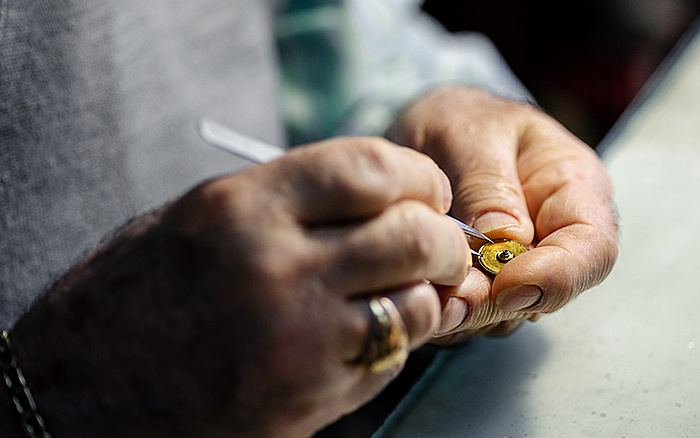
Everyday IP: From watches to wearables
Whether you prefer the classic look of an analog watch or the modern functionality of a digital wearable device, every timepiece is a marvel of miniaturized technology and a timeless connection to a 500-year history of innovation.
Once upon a time, carrying a watch was a necessity more than a fashion statement. Now, mobile phones and a multitude of personal devices fulfill the same need with a level of precision impossible with mechanical actions. Tracing this shift exemplifies why patent protection is so valuable for the underlying Intellectual Property (IP) – because the hands of time point ever in the direction of progress.
Early timekeeping: sundials to spring-powered clocks
Approximately 3,000 years separated the earliest timekeepers and the first device resembling the watches we still see today. During that span, humans were limited to sundials, water clocks, hourglasses and weight-powered mechanisms.
The 15th century gave us the mainspring: a coiled metal ribbon that enabled mechanical clocks to be wound and activated. The fusee, a miniaturized conical pulley, kept the movement imparted by the mainspring constant as it uncoiled. Alongside the balance wheel and verge escapement, which ensured regular oscillation, these inventions powered the so-called "Burgundy Clock," one of the first mechanical timekeeping devices that did not rely on moving weights. Now displayed in the Germanisches Nationalmuseum, the exquisitely ornate device was originally presented as a gift to Philip the Good, Duke of Burgundy, around 1430.
Despite their transformative influence on engineering, it is unclear who invented the mainspring, fusee or balance wheel. The inventor of the first portable watch is equally murky, though Peter Henlein of Nuremberg is often credited with pioneering small wearable timepieces (humorously referred to as "Nuremberg eggs" because of their round appearance) in 1510 or 1511.

One of the first major developments toward wearable timepieces was miniaturization. While earlier clock designs used large counterweights that descended over time to store and gradually release energy, smaller mechanisms used a mainspring for a much more compact driving force.
Genius craftsmanship notwithstanding, his title of inventor of the watch has been largely dismissed as historical mythologizing in light of references in Italy to "small, portable clocks" worn on costumes dating from some two decades earlier.
Time ticks by: highlights of watch development
For almost 300 years, the vast majority of watches were carried in the pocket or worn on a chain as a pendant, sometimes called "pomander watches." But over that period, there were numerous improvements to the devices' internal mechanisms:
- Balance spring: This greatly improved accuracy by regulating the balance wheel. English inventor Robert Hooke first came up with the idea in the late 1660s and presented it to the Royal Society in 1670, but could not patent it or produce a prototype. Christiaan Huygens completed a working watch with a balance spring in 1675 and did patent it (as he had previously patented his pendulum clock in 1656).
- Cylinder and lever escapements: These were invented by Thomas Tompion (1695) and Thomas Mudge (c. 1755), respectively. Each represented massive improvements on the verge escapement mechanism, with Mudge's lever still used in most mechanical watches to this day.
- Pin-pallet escapement: This variation on the lever escapement was cheaper to produce but not as accurate. Invented by Louis Perron in 1798, it was popularized decades later by Georges Frederic Roskopf in the 1860s, who coupled it with emerging mass-production techniques to make watches affordable to many for the first time.
The wristwatch: feminine, masculine or simply convenient?
A less obvious issue with portable timepieces was the variable effect of gravity on their internal mechanisms; constantly shifting a watch's orientation during day-to-day use reduced its accuracy. The solution was the tourbillon, patented by Abraham-Louis Breguet in 1801. This was a freely rotating cage that housed the balance wheel and escapement to counteract the wearer's movements. But Breguet's contribution to inventive history does not end there.

Watchmaking is often seen as the epitome of where artistry and engineering meet, and with good reason. Many hand-made watches dress to impress, putting their inner workings on display to showcase a designer's ingenuity and a craftsperson's finesse.
Nine years later, the renowned watchmaker, or "horologist," received a special commission from Caroline Murat, sister to Napoleon Bonaparte and "Queen of Naples" during France's imperial period: a watch attached to a bracelet. Breguet obliged, using hair trimmed with gold to craft a bracelet that supported a remarkably fine timepiece and, in the process, created what was probably the first true wristwatch.
Throughout most of the 1800s, wristwatches were marketed almost exclusively to women. But when English soldiers in the Boer War (1899-1902) needed a practical solution for synchronizing their maneuvers, they affixed pocket watches to their wrists with leather straps. As the 19th century gave way to the 20th, wristwatches became just as common among men as women, initially in Europe and later in the United States as soldiers returned from the First World War.
Quartz, then digital, then… back to quartz
Crystalline silicon dioxide — a.k.a. quartz — vibrates thousands of times a second when subjected to an electric current. With some tuning, this can be calibrated to exactly 32,768 times a second. Combine that regular pulse with an integrated circuit and other components, and you have a watch with millisecond accuracy. But until the 1950s, quartz was considered ideal for clocks and not suited for miniaturization.
Nevertheless, from the early 1950s to the late 1960s, Swiss, American and Japanese companies worked frantically to develop a piezoelectric-crystal watch. Seiko ultimately triumphed: After demonstrating a novel chronometer at the 1964 Olympic Games in Tokyo, the Japanese business released the Astron SQ in 1969 as the world's first consumer quartz watch. The first Astron saw a limited release but helped boost the manufacturer's prestige just as Seiko became the world's largest watch company in 1970. Swiss watchmakers only regained ground when two of the nation's largest watchmaking organizations merged into what later became the Swatch Group. This new company focused on mass-producing quartz watches to weather the bottoming-out demand for mechanically driven handicrafts, granting those traditional skills the breathing room to endure in the luxury market.

As in many sectors, electrification threatened to undercut the traditional watchmaking industry. However, instead of exclusively favoring one technology over the other, horologists applied themselves to both, offering consumers a breadth of choice to fit their tastes and lifestyles.
Alongside the quartz explosion, advances in microelectronics drove a brief surge in digital watches with light-emitting diode (LED) and liquid crystal display (LCD) screens in the '70s and '80s. The battery-hungry LED models soon faded out of favor, but LCD-display watches grew in popularity by appealing to athletes (e.g., Timex's Ironman line), technology enthusiasts (Casio's "computer watches") and image-conscious film fans.
Smartwatches vs. wearables
Watches with rudimentary computing capabilities emerged in the early 1980s, notably Seiko's RC-1000 Wrist Terminal. Few were popular other than to niche, hobbyist audiences, and some, like Microsoft's SPOT line of the mid-2000s, were abject failures.
In the early 2010s, improvements to chip technologies, near-field Bluetooth communication and cellular networks gave smartwatches a shot in the arm. But just prior to these advances, watch manufacturers were experimenting with ingenious methods of transferring data wirelessly. One such curiosity was Timex's short-lived Datalink series, which used a pattern of white bars flashed by a CRT monitor to synchronize with a computer.
Distinctive though it was, the technique did not catch on, and constant wireless pairing became the norm. Nowadays, when connected to a nearby smartphone, modern smartwatches enable access to various applications and allow users to take calls. Their short history thus far includes inspiring crowdfunding campaigns that led to dispiriting failures (Pebble) and intriguing fusions of classic and high-tech styles (Moto 360, which also did not live up to hopes).

The size limitations imposed by a wrist-mounting mean the modern smartwatch cannot match its larger cousins for raw functionality. However, it does not have to. By pairing wirelessly with other devices, wearable technology stays convenient, fashionable and useful.
Of course, it is no surprise that tech giants dominate this space: the Samsung Galaxy Watch, Google's Fitbit series and the Apple Watch. Apple markets its product as the complete smartwatch package, while Samsung and Google compete by offering much more affordable models with reduced functionality. These pared-down devices are sometimes called wearables to distinguish them from full-on smartwatches.
A timeless classic
As the smartwatch and wearable technology sector expands, appreciation for the intricate engineering of classic mechanical or quartz watches has not died out. One does not have to be a horologist to enjoy the precise beauty of a hand-assembled mechanism or the assuring tick of a swinging escapement. Today, men and women the world over admire the refined expression of personal style that is condensed into the ideal wristwatch.
But if the history of watchmaking teaches us anything, it is that time does not stand still; change and innovation are the beating (or ticking) heart of business. Whether you have an invention or brand for the ages, turn to the experts at Dennemeyer to protect and manage your IP.
Filed in

IP infringement disputes abound in the film industry but some are more dramatic than others. Explore the unusual IP cases spawned from prominent movies.



